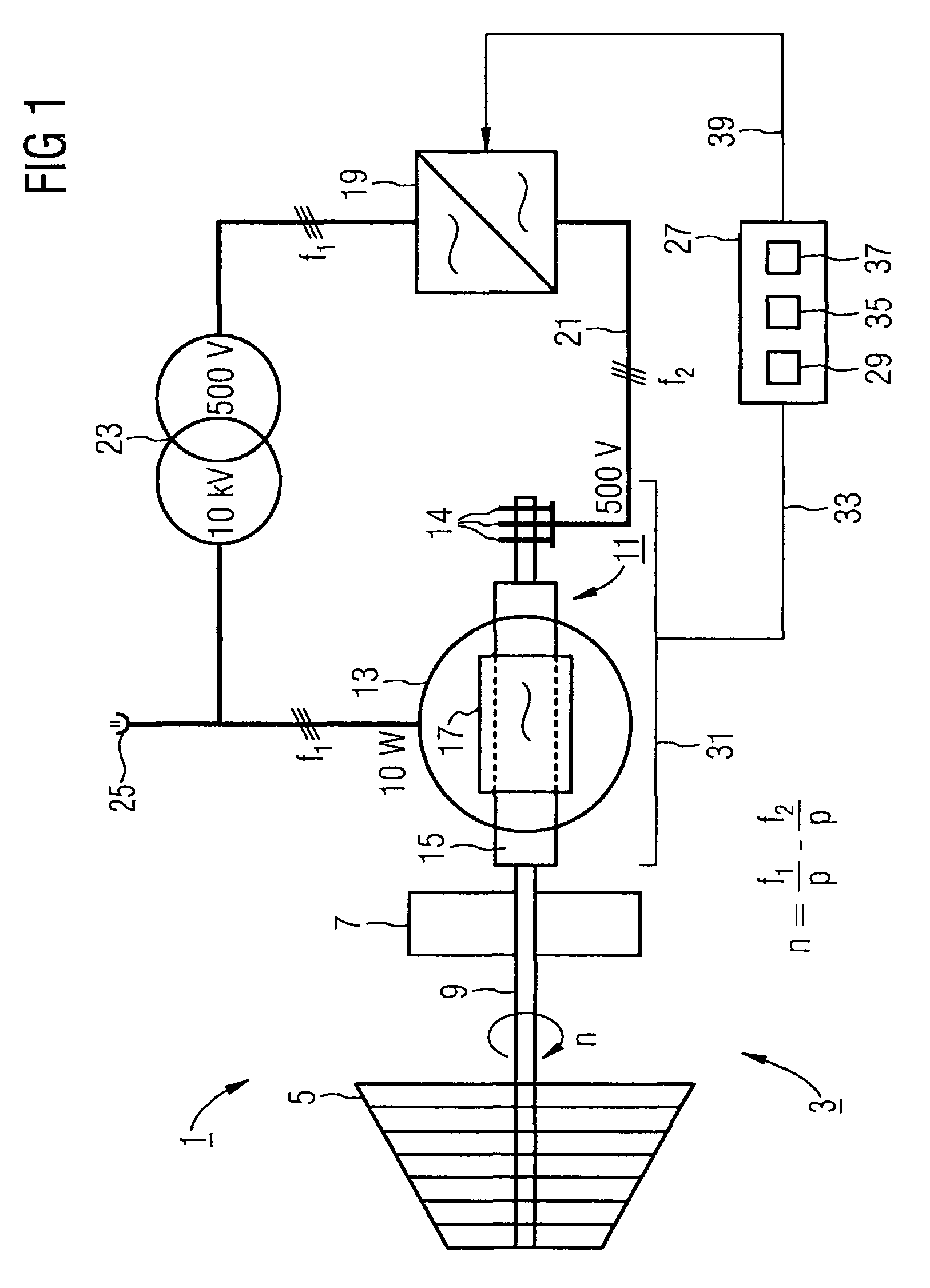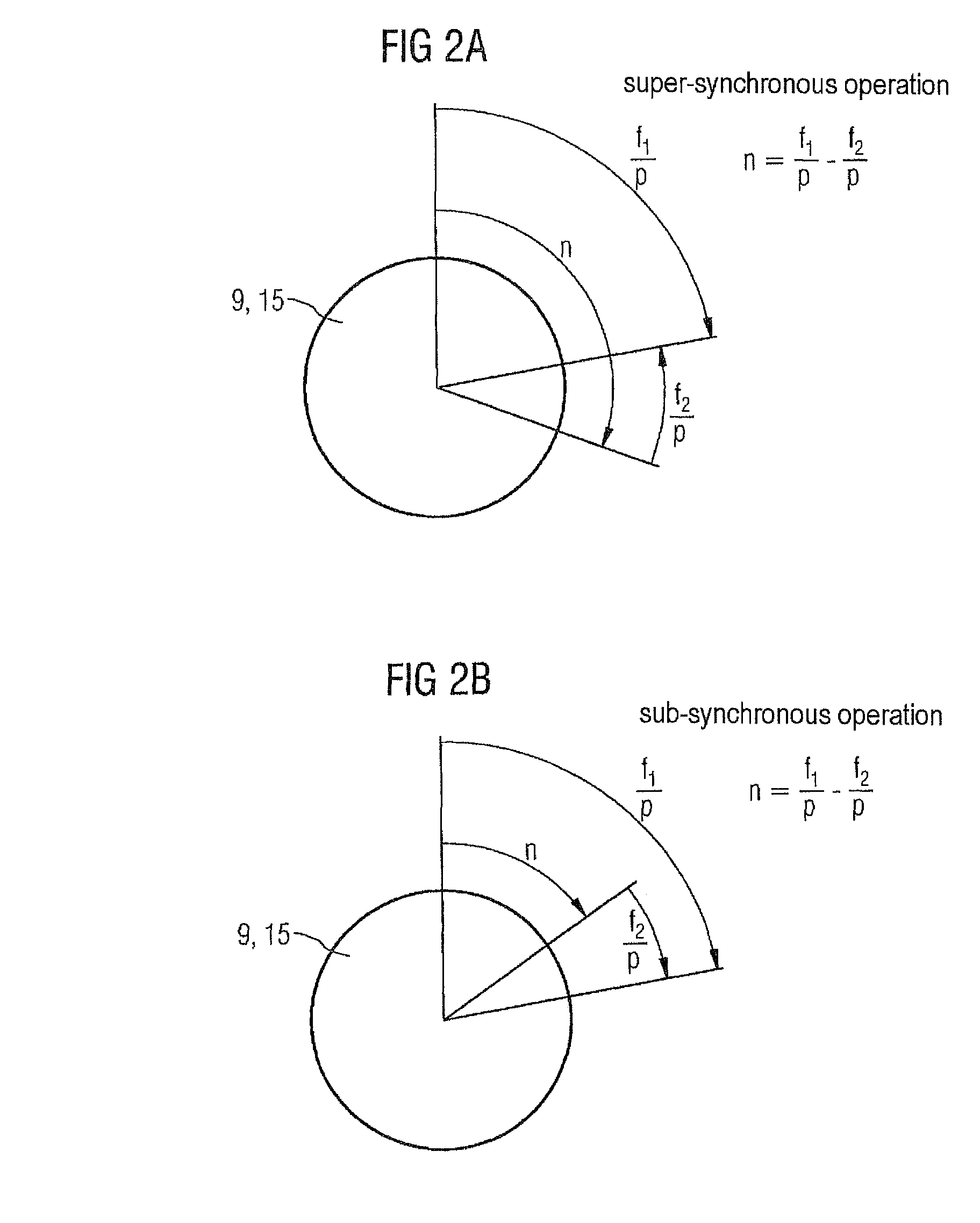Generating unit and method for producing a current with a predetermined network frequency
a technology of generating unit and network frequency, which is applied in the direction of electric generator control, dynamo-electric converter control, control system, etc., can solve the problems of reducing the flexibility of the design of torque-producing components, unable to achieve satisfactory efficiencies, and neither approach is suitable for high output power, etc., to achieve high stator voltage, compact and cost-effective, and better dynamic behavior of the drive
- Summary
- Abstract
- Description
- Claims
- Application Information
AI Technical Summary
Benefits of technology
Problems solved by technology
Method used
Image
Examples
Embodiment Construction
[0043]FIG. 1 shows a generating unit 1 with a drive 3, which here is constructed in the form of a turbine 5 and an additional flywheel 7. The drive 3 drives a generator 11 via a shaft train 9 with variable rotational frequency n. Here, the rotational frequency n is the frequency of rotation of the shaft train 9. The generator 11 is formed by a stator 13 and a rotor 15, the rotor 15 being coupled directly, i.e. without gearing, to the shaft train 9, and likewise rotating at variable rotational frequency n. That is to say, according to the preferred embodiment, the drive 3 is designed with variable rotational frequency n for driving the rotor 15.
[0044]In a conventional generator designed as a synchronous machine, this would lead in the case of a two-pole machine (number of pairs of poles p=1) to the rotational frequency n being equal to the stator rotary field frequency f1, as with conventional synchronous machines a stationary rotary field magnetomotive force is produced in relation ...
PUM
 Login to View More
Login to View More Abstract
Description
Claims
Application Information
 Login to View More
Login to View More - R&D
- Intellectual Property
- Life Sciences
- Materials
- Tech Scout
- Unparalleled Data Quality
- Higher Quality Content
- 60% Fewer Hallucinations
Browse by: Latest US Patents, China's latest patents, Technical Efficacy Thesaurus, Application Domain, Technology Topic, Popular Technical Reports.
© 2025 PatSnap. All rights reserved.Legal|Privacy policy|Modern Slavery Act Transparency Statement|Sitemap|About US| Contact US: help@patsnap.com



